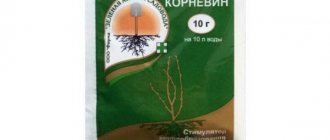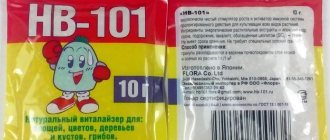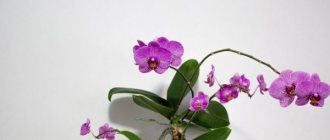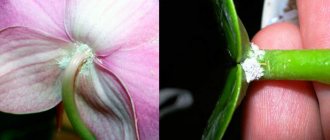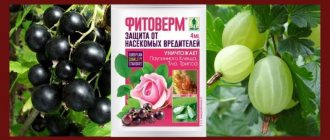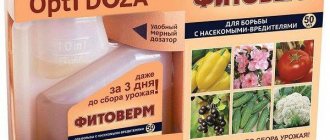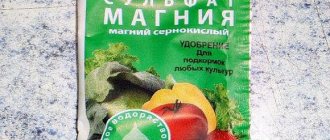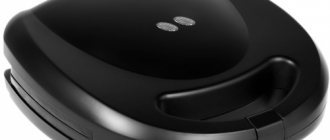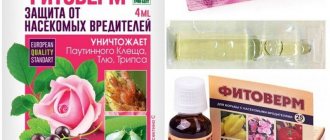Author: Elena N. https://floristics.info/ru/index.php?option=com_contact&view=contact&id=19 Category: Bioregulators Published: July 29, 2014Last edits: February 20, 2020
Anyone who has tried to germinate seeds, replant a plant and root cuttings knows that achieving a 100% result is very difficult, and sometimes impossible, since not all seeds germinate, not all cuttings are viable and not all transplanted plants take root in a new place. Medicines called growth stimulants help minimize risks. One of the most reliable drugs in this group is Kornevin. Our story will be about the properties of this growth stimulator and how to use it.
Kornevin's action
Kornevin contains indolylbutyric acid (IBA), which is the main active ingredient: when it gets into the soil, IBA is converted into the hormone heteroauxin, which stimulates the growth of callus and roots due to irritation of the integumentary tissues of the plant. Plants can be treated with Kornevin no more than twice: before planting and after planting.
Cuttings treated by Kornevin not only take root more easily, but are also much less likely to become infected with rot. The root system under the influence of this biostimulator develops faster, and the plant itself becomes more resistant to excess or lack of moisture in the soil, as well as to sudden changes in temperature.
- How to prepare Bordeaux liquid
An analogue of Kornevin to one degree or another is the drug Heteroauxin.
Advantages of Kornevin:
- the drug can be used for almost all crops;
- the development of cuttings after using Kornevin is significantly accelerated;
- in all plants the root system develops better and faster;
- seedlings adapt and take root more easily;
- the use of the drug can stop fruit falling from the tree;
- plants become more resistant to unfavorable environmental factors;
- Kornevin is compatible with many drugs;
- The drug has a very affordable price.
Kornevin also has disadvantages:
- in case of an overdose of the drug, plants can get burned or rot;
- an aqueous solution of the drug sometimes gives a weak effect, and sometimes is not effective at all.
Advantages and disadvantages of Kornevin
Like any product, it has advantages and disadvantages. The advantages of using Kornevin include:
- effect on all types of trees, bushes, flowers and vegetables, even those that are difficult to root;
- you can speed up rooting: in the spring of seedlings or in the fall of seedlings, so that they take root faster and are not exposed to cold or heat with undeveloped roots;
- you can save plants during transplantation if it is urgently needed;
- greater effect from the drug than from honey and yeast, which contain natural auxins.
The disadvantages are the following: Kornevin’s aqueous solution may be weak, and root growth will be slow, then you need to use dry powder. In this case, you need to monitor the consumption rate; if you overdose, then, on the contrary, it will have a depressing effect on the roots.
We recommend reading
Instructions for use of the drug Epin extra
Instructions for using succinic acid for plants
How to use boric acid in the garden
Rules for the use of copper sulfate in gardening
Instructions for use of Kornevin
Kornevin – dry application
- Kornevin is produced in the form of a fine powder in the shade of baked milk in bags of different capacities: 4, 5, 10, 50 g. It is used in dry form and in solution.
- Before planting plants, their roots are dusted with Kornevin. Dry Kornevin powder can be mixed in equal parts with charcoal powder or in a 10:1 ratio with a fungicide (for example, the biological product Fitosporin-M). This mixture will not only help the plant take root faster, but will also strengthen its resistance to fungal diseases.
- The cuttings can be powdered with a root former, or you can simply dip them into a container of powder and then shake off the excess. Cuttings should be dipped no deeper than 2 centimeters, and leaf cuttings should be no deeper than 1 cm. After treatment with Kornevin, the cuttings are immersed in water or planted in a prepared substrate for rooting.
Application of Kornevin solution
Kornevin's solution is used for watering plants, as well as for treating their bulbs, seeds and tubers. The solution is 0.1%, that is, 1 g of Kornevin is dissolved in 1 liter of water. Seeds and bulbs are soaked in this solution for 16-20 hours. Only a freshly prepared root former solution is effective.
Consumption of Kornevin solution:
- tree seedlings (both fruit and ornamental) - 2-3 liters per 1 tree;
- shrub seedlings – 0.25-0.3 l per 1 bush;
- seedlings of fruit and vegetable crops – 50-60 ml per 1 seedling;
- flower seedlings - 30-40 ml per 1 seedling.
Treatment of planting material by Kornevin
| culture | How to prepare the solution | Dosage and treatment time |
| Root vegetables, tubers, bulbs | 5 g/5 l, dilute in warm water | 18 hours |
| Fruit tree seedlings | 5 g/5 l, dilute in warm water | 2 liters for each tree |
| Raspberries, gooseberries, currants, etc. | 5 g/5 l, dilute in warm water | Under-barrel or hole watering during planting, 2 liters each. |
| Vegetables | 5 g/5 l, dilute in warm water | Root watering, 50 ml |
| Flowers and ornamental grasses | 5 g/5 l, dilute in warm water | Watering over areas or 40 ml at the root |
Kornevin is best used in those cases and for those plants that are difficult to take cuttings under normal conditions. From garden ones these are cherry, plum, quince, pear. Among the domestic flowers - ivy-leaved geranium, or an ampelous type of pelargonium, which grows in the form of a vine with lashes up to 1 meter long.
Rooting of conifers (pine, blue spruce, juniper)
For cuttings of these trees and shrubs, two-year-old shoots are taken. They look like a cross-shaped branch with two side shoots at the end. These side ones are cut off, 5-7 cm of the lower part is cleared of needles and shallow 2-3 scratches are made along the bark, into which Kornevin is rubbed.
Before treatment with Kornevin, coniferous branches are kept in water (can be filled whole) at a temperature of 18-20 degrees.
Then the root-treated seedlings are stuck into planting pots, which can be made from cut plastic transparent untinted 3-liter bottles at an angle of approximately 30⁰. The bottles are cut 1/3 from the bottom, filled with drainage (1-2 cm), soil with peat (10-12 cm) and washed and dried river sand (5 cm).
The seedling is then covered with the cut off top of the bottle for a greenhouse effect - this is why you need to take a transparent bottle, this will ensure normal light conditions.
It is better to keep the rooted seedling on the balcony until autumn, protecting it from direct rays of the sun.
It is better to plant seedlings in the spring, and in the fall transplant them into open ground, only covering them with polyethylene for the winter.
Precautionary measures
When working with the drug, you need to wear a plastic apron, latex gloves, a gauze bandage or a respirator, and glasses. To prepare the working solution, do not use containers that are used for eating or preparing food or containing drinking water. During the procedure you should not drink, eat or smoke. After finishing work, you must take a shower and put on clean clothes.
- Reviews about the use of Abiga-Pika
Empty packaging should be burned or thrown away with household waste.
How to root a rose from a bouquet using root
Sometimes green buds form on the stems of roses from a bouquet in place of torn leaves. If you like the variety, you should try rooting the cuttings. To do this, the stem is cut off at the bottom and top, leaving 3 healthy swollen buds.
The lower part of the stem from the cut to the lowest bud is scratched with a sharp knife to make it easier for the roots to germinate. Then this place, including the cut and the lower bud, is dipped in the root, and after a few minutes the excess is shaken off and the cutting is planted in a planting container. The top two buds should remain on the surface. It is advisable to use special soil for roses.
Cover the top of the container with polyethylene or cover it with a transparent plastic glass and place it in a warm, bright place. From time to time, the shelter is removed for ventilation and, if necessary, the soil is moistened.
To root roses, experts advise using rootin together with zircon.
If there are still living cuttings from the bouquet, you can try rooting them in an aqueous solution of the drug. Planting material is prepared in the same way as for dry rooting. Only the lower bud of the cutting should remain in the water.
First aid
The recommendations below are intended only for providing FIRST aid, after which you should immediately consult a doctor and follow his instructions! DO NOT SELF-medicate!
- Although the drug is not very dangerous, getting it into the body or on the skin can have unpleasant consequences.
- If the drug gets into the digestive system, you must immediately drink several glasses of water with activated carbon at the rate of 1 tablet per 10 kg of body weight and immediately call a doctor!
- If Kornevin gets into your eyes, rinse them in the open position with plenty of running water.
- If the drug gets on the skin, the contact area should be washed with plenty of cold running water.
Rooting grape cuttings
For rooting grape cuttings, kornevin is used both dry and diluted in water. This crop is quite easily propagated by cuttings, but if there is very little planting material or the variety is especially valuable, you should play it safe and use a root former.
The dry method is more reliable, it will require more powder consumption and is dangerous with the possibility of rotting of the cuttings. It is used if the selected variety does not take root in the solution. The dry method is used if, after 2 weeks of rooting in solution, callus formation has not occurred. The cutting should be carefully examined under a magnifying glass: if even microscopic growths are noticeable, it should be left in an aqueous solution.
Reviews
Maria: Kornevin is a strong stimulant that strengthens plant resistance to all sorts of adverse factors. I use it to support indoor plants weakened by disease or transplantation, to germinate seeds, and also to support rooting cuttings.
Peter: I use Kornevin when growing seedlings and when transplanting seedlings into the garden. The seedlings are strong and viable, very rarely get sick and can easily tolerate picking and transplanting.
Anastasia: I am an avid summer resident, I really love all kinds of experiments. The first time I used Kornevin to strengthen pruned seedlings: I simply added root former powder to the soil. The seedlings turned out to be surprisingly strong, with a developed root system. I watered a weak sapling of bush St. John's wort with Kornevin's solution, and it began to come to life right before our eyes.
Official website and manufacturer's recommendations: https://www.grepharm.ru/products/159/404/
Application for seedlings
Instructions for using root for seedlings include keeping the seeds in an aqueous solution for two hours. Crops that do not tolerate root damage well are watered with a stimulant during picking and two weeks after it. In order not to harm the sprouts, you need to know how to properly dilute the root for watering the seedlings. The working solution is prepared at the rate of 1 g of the drug per 1 liter of water. No more than 60 ml of liquid product is needed per plant. An overdose causes inhibition of seedling growth, so the seedlings are watered, carefully measuring the amount for each bush.
When transplanting grown seedlings into the ground, you should focus on the weather. On sunny and warm days it is not advisable to use the drug, since additional stimulation of root formation will stop the growth of the above-ground part and slow down the onset of fruiting. Favorable weather conditions themselves contribute to the development of the root system and further growth of the plant. More benefits will come from using the root for seedlings in a long, cold spring, when the earth is slightly warmed by the sun. At such a time, sprouts spend a lot of energy overcoming unfavorable conditions and transplanting into the soil turns out to be painful. To help young plants take root and maintain strength, a biostimulator is used. The powder solution is prepared according to the standard procedure described on the packaging.
About the drug
The main substance in the root former Kornivin is indolylbutyric acid (IBA). In the soil it turns into a plant hormone, which is responsible for root growth. In addition, the planting material of the drug contains: manganese, potassium, phosphorus, which are beneficial for plants.
It doesn’t take much time to soak, grow and maintain the bulbs using rooting material, as well as to form new cells. How long it will take should be considered in the instructions for use, or done at the beginning of planting. This way you can find out what else needs to be added in order to achieve the maximum effect as a result of planting during the first week.
Important: the root former not only helps plants take root, but also reduces their stress during transplantation, and also helps save sick and dying cuttings.
Photo of the stimulator
To make it easier to find the necessary root former in a garden store, you can first familiarize yourself with the photo of the drug Kornivin for the active growth of cuttings and roots. Depending on the manufacturer, product packaging may also change.
One of the best materials that even save tree roots. Formation of new roots in dry soil. The composition of the material for the formation of new shoots is watered on the roots, usually diluted in a liter of water. But if you are in doubt, or the area to be fertilized is large, it is better to dilute the composition of the material according to the method indicated on the packaging for use. Therefore, more than just a liter of water can be used.
Short description
Kornevin is not only a root system growth stimulator, but also an immunomodulator. Kornivin for the growth of cuttings and roots, guarantees the resistance of seedlings to negative environmental factors, such as drought, waterlogging, temperature changes. To do this, simply soak the seeds in a properly diluted solution before sowing.
Using the drug Kornevina:
- the rate of seed germination increases;
- the quality of the resulting roots in cuttings improves;
- The root system of seedlings planted in open ground grows better.
The use of fertilizer in the form of a powder or solution also helps to save seedlings and cuttings. You can use the product for cuttings or seedlings of crops; this is done with biostimulants. To do this, conditions for root growth are created in the dry soil of the crops being grown. After applying and processing the crop, the soil is saturated with useful substances, then the fertilizer has a positive effect if it is properly diluted in a liter of water, according to the instructions for use.
Rules for handling root
The drug belongs to hazard class 3, and you need to work with it with gloves, and it is better not to throw away the used packaging, but to burn it. The stimulant manufacturer prescribes the following handling precautions:
- the drug is not diluted in food containers;
- while working, you must not eat, smoke or drink;
- If you get it on your hands, wash them immediately with soap;
- in case of accidental ingestion of even microscopic doses, you should drink a large amount of water, induce vomiting and take activated charcoal;
- The drug is stored in places inaccessible to children.
All components of the root are not phytotoxic and are not carcinogenic, but the recommendations should not be neglected.
Using root crops allows you not only to obtain healthy, strong plants with a powerful root system, but also to achieve the rooting of the most unusual and exotic crops in your area. With its help, it is also easier to learn how to graft different varieties and obtain strong, viable scions.
Composition, action and dosage
In addition to IBA (0.5% of the dry weight of the substance, or 5 g per 1 kg of commercial powder), the root composition includes macro- and microelements that promote root formation: potassium, phosphorus, manganese and molybdenum. Kornevin is diluted simply: the number of grams in a bag is the same as regular tap water. It is also possible to pollinate the roots with a dry preparation, see below. The action of the root is based on the formation of an influx over the cut/fracture - callus; Kornevin as a phytohormone is primarily a stool former. Dormant buds awakened in the callus send out roots much more intensively than on other parts of the cutting, which is clearly visible in Fig.
Callus with young roots on a cutting
However, it is necessary to use root with caution. If the mother plant itself is well cut (the callus before root formation is small or not noticeable), the root will only delay rooting. Left on the trail. rice. it is clear that bean cuttings without IMC and root root take root and develop better. In this case, the rooting of strong cuttings from a strong healthy plant should be accelerated (if required) with heteroauxin, and the formation of roots on weak ones should be stimulated with epin.
The effect of indolylbutyric acid and root on plants with varying degrees of susceptibility to them
Note: in general, we do not particularly recommend Kornevin for cuttings of herbaceous plants; in this case, its purpose is somewhat different, see below.
Cuttings of moderately or weakly rooted plants (roses, hibiscus, indoor citrus fruits and grapes, indoor pomegranate) together with rootstock usually require the use of additional preparations; most often - specific to a given species. For example, rose cuttings root much better if root is used in combination with zircon, on the right in Fig. In any case, 3-7 days after planting a rooted cutting, you need to give it phosphorus-potassium fertilizer so that the rapidly growing roots “suck in” the callus, otherwise the seemingly well-established cutting may rot. Don’t rely on rich soil here; you need quickly absorbed mineral fertilizers.
About cuttings of conifers
Conifers are the most difficult to take cuttings. For them, phytohormones alone are not enough; a special cutting technique is needed. For example, how to propagate blue spruce and juniper with cuttings at home, see video:
Video: about propagation of blue spruce and juniper by cuttings
Cuttings of conifers make sense not only as saving costs on planting material. The species on the list were chosen because, grown from cuttings, these conifers can grow in pots in an apartment. Don't you feel sorry for the Christmas trees that are cut down en masse on New Year's Eve? And so it will be your own, alive. Juniper not only exudes a large amount of air-healthy phytoncides, but also produces “berries” (cones in a fleshy shell), which are widely used in pharmacopoeia, for enhancing drinks, etc.
A note on an unhealthy topic: juniper “berries” are excellent at absorbing fusel oils, while at the same time flavoring the alcohol.
Reviews about the effectiveness of the drug "Kornevin"
If you had to trim the roots very much, you can not soak them, but lightly powder them with “Kornevin”, taking it with a soft brush.
Sometimes on online forums for gardeners you can find stories like this:
“Due to my inexperience, I did something terrible this spring. I sowed radishes and watered them with Kornevin, so that they would grow bigger. When it rose, I watered it again with the same solution for greater effect. As a result, some kind of hairy misunderstanding grew up” (Anzhelika, Moscow).
Indeed, “Kornevin” is not suitable for all crops. It stimulates the growth of adventitious roots, and for root crops this effect is extremely undesirable.
Otherwise, reviews about the drug are positive. Crop experts also confirm the high effectiveness of this stimulant:
“The roots of the cuttings, when the cuttings themselves are placed in optimal conditions for germination, develop and grow a little slower than under the influence of the root stimulator “Kornevin.” Stimulating the growth of the root system is very beneficial for plants, because the growth of young roots increases the survival rate of plants.”
E.V. Oparina, biologist, participant of the conference of the Siberian Federal University
Features of use
Kornevin is a universal remedy. It is used for different types and varieties of plants both at the stage of seed germination and after planting. In each case, the method of administering the drug is slightly different. It is also worth considering the characteristics of plants, especially decorative and exotic flowers.
For rooting cuttings
The main indication for use is rooting cuttings. For this purpose, it can be used for any plants that are propagated by cuttings. To germinate a root on a leaf or on a young shoot, you can use one of the following methods:
- prepare the solution according to the instructions, place the cutting in it and leave until the root appears;
- moisten the seedling in water, dip it into the powder by 2 cm and plant it in the ground without waiting for the root to appear in the water;
- place a small amount of the drug in the soil for seedlings and mix it with the top layer of soil, and after planting the cuttings, water it with plain water;
- plant the cutting in the ground and water it with the amount of Kornevin solution specified in the instructions.
After planting the cuttings, intensive growth of the root system will be observed. To consolidate the effect, it is recommended to carry out additional watering with an aqueous solution of the drug after 2-3 weeks.
For orchids
Kornevin can be used for different types of orchids during their propagation and planting in the ground. For these plants, both an aqueous solution and a dry powder are used, but it is recommended to mix it with activated carbon.
Another advantage of the drug for orchids is its ability to rehabilitate the root system of flowers in unfavorable conditions. If the rhizome was injured during transplantation or suffered from drought or pests, it is recommended to water the orchids with an aqueous solution at intervals of 2-3 weeks.
For ficus
Most varieties of ficus root well in ordinary water. However, this process can be accelerated with the help of Kornevin. Reproduction of adult plants is carried out according to the following algorithm:
- a small young shoot with 2-3 pairs of leaves is cut off and washed to remove juice;
- prepare an aqueous solution of Kornevin from a 1:1 ratio;
- lower the shoot into the solution and wait for the first roots to appear;
- When the roots reach at least 1-2 cm in length, the seedlings can be transplanted into the ground.
Ficus is a plant that takes root well and tolerates unfavorable environmental factors. For it, you can safely use concentrated powder of the drug - just powder the cut area and lower the cutting into the ground.
For roses
Kornevin helps well to root rose cuttings before planting them in a greenhouse or in open ground. It can be used either in powder form or as an aqueous solution. Before planting in the soil, it is advisable to leave the cuttings in the drug solution for at least 15-20 hours. You can also water the plant after planting, and then repeat the procedure after 2 weeks.
For conifers
Different varieties of coniferous plants take root with difficulty. In addition, when planting, it is not recommended to load the soil with fertilizers so that it remains light and loose.
Kornevin is a drug that will increase the survival rate of cuttings of spruce, pine, fir, thuja and other varieties of coniferous plants. To do this, you can use either a dry concentrate or a powder diluted with water.
How long can you soak seeds in Kornevin?
Having pedantically and thoughtfully studied the instructions for using the Kornevin stimulant (whichever we could find, from a variety of manufacturers), not a single one contained any recommendations regarding soaking seeds in Kornevin. Which allows us to draw conclusions: this preparation is NOT intended for soaking seeds. It stimulates the growth of roots that the seeds do not yet have, therefore it is advisable to use it only for treating seedlings, seedlings and cuttings. Automatically (it goes without saying) the question of how long you can soak the seeds in Kornevin disappears.
To speed up seed germination, it is better to soak them in growth stimulants specifically designed for this purpose:
Instructions for their use can be read by clicking on the name of the drugs. Links will redirect to relevant articles on our blog.
